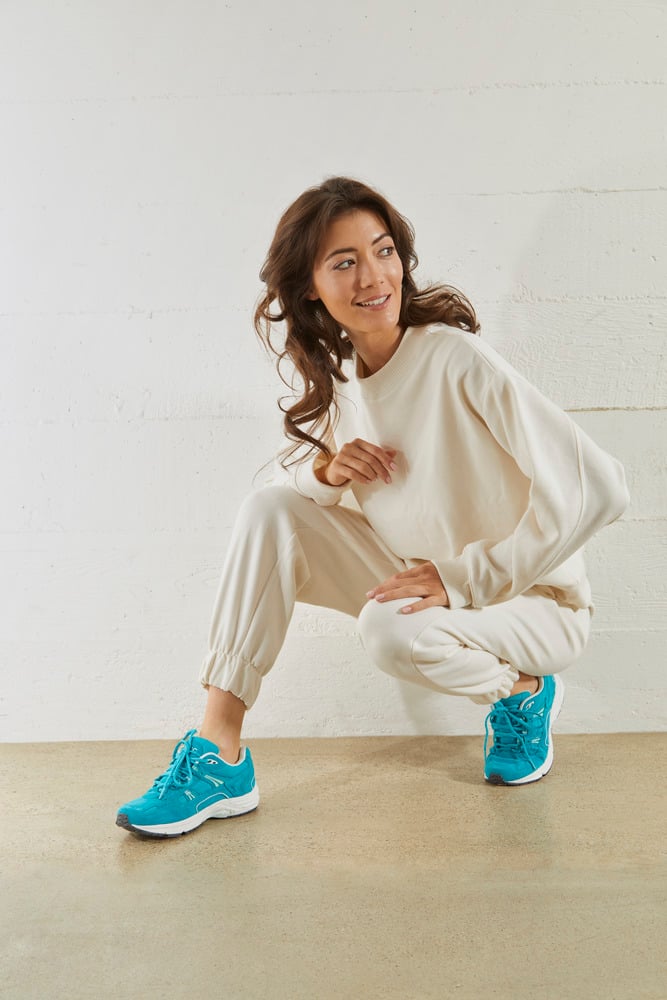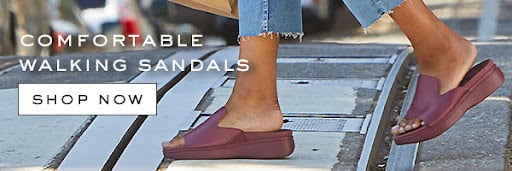
We all know the feeling: you’re taking a casual stroll through the park or hiking up an incline, when all of a sudden you start to notice a sharp stinging sensation on your foot and you wonder, “why do my feet hurt?” As you remove your shoe, you see a red, fluid-filled bubble, and you realize—yup, you’ve got a blister.
Blisters can be a pain, both in the physical sense and because they can be extremely annoying to deal with and manage, as they often appear in awkward and uncomfortable areas of your foot. And apart from waiting for it to improve, few people know the best ways to treat blisters.
Happily, you might use a few methods to alleviate the pain and encourage your skin’s healing process. If you’re wondering how to get rid of blisters on your feet, this guide will take a closer look at this common foot condition—the factors that make you prone to blisters, and several blister treatment techniques for getting back on your feet in no time.
What Causes Blisters?
The blisters you’re most likely to find on your feet are called friction blisters. You’re most likely to notice blisters on your toes, forefoot, and heel. Lesions appear as raised, fluid-filled bubbles that develop on your skin due to some form of irritation, like rubbing, chafing, or excess moisture.
While these factors are often hard to avoid, they can be aggravated by a few specific conditions and circumstances:1
- Wearing brand new shoes – Shoes that don’t fit properly can irritate the skin of your foot, which is often the case if you’re trouncing around in a pair of sneakers or sandals you just bought. When we wear newer shoes that haven’t been broken in yet, our shoes tend to rub against some regions of the foot, leading to abrasions and skin blisters.
- Wearing too-small or too-big shoes – Blisters are likelier to appear in areas that regularly come into contact with the inside of your shoe. If your shoes’ interiors are cramped or have rough inner edges, they may chafe your skin. Likewise, friction can also be brought about by shoes that are too big. Having too much space can cause your feet to slip and slide around in the shoe, leading to excessive and unnecessary friction.
- Not wearing socks – Excessive amounts of friction can build if you don’t regularly wear cotton socks with your footwear. Some level of friction is perfectly normal while walking or running, but wearing cotton socks adds an extra layer of protection against the repeated rubbing your feet could do against shoes’ structured interiors.
- Moisture-heavy climates – If you’ve ever walked around in wet environments, like streams and ponds, you may have noticed that when water seeps into your shoes, your feet are more vulnerable to blisters. The same principle goes for microclimates. If the “weather” inside your shoes themselves is muggy due to heightened perspiration, you’ll risk increased friction and be more susceptible to developing blisters.
- Having an abnormal foot structure – The presence of certain structural foot abnormalities, like bunions, corns, heel spur, claw toe, or hammer toe, can increase the pressure of certain areas of the foot against the shoe. This can also increase the likelihood of blistering.
Should I Treat Blisters, or Let Them Heal On Their Own?
It depends. As friction occurs, a watery fluid collects under the foot blister roof (made up of dead skin), which acts as a cushion to protect the damaged area. Sometimes, neglecting this hot spot can cause the foot blister roof may tear, revealing a raw and red wound that is painful to the touch. If this happens, your friction blister is more susceptible to bacteria and may take longer to heal, so it’s important to act fast to prevent infection.
How to Treat Blisters on Feet
Depending on the severity of the injury, some blisters take as few as 3 days to heal, while others may take up to 2 weeks.2 The steps to treating your friction blister vary depending on whether or not the blister roof or “cushion”—that sheath of skin over the wounded area—is still present or not. If the blister roof is still covering the injured area, treatment is more simple than if the blister roof has been fully removed.
Treating a Blister with a Blister Roof Intact
If your blister roof is undamaged, you’re in luck! The blister roof acts as a natural barrier against outside bacteria, which can lessen the lesion’s chance of infection. Unbroken skin will also reduce the amount of effort you have to put into treating your injury.
#1 Stop the Activity that Gave You the Blister
Your first course of action is to stop wearing the shoes that caused the painful blister in the first place. This will only aggravate the area and could make the blister pop. Until your blister heals, consider wearing shoes that don’t irritate the problem area and allow the foot to breathe. So, if your blister is on your heel, try wearing open-backed shoes.
If you got the blister from an activity like running or hiking, think about swapping these activities out with alternative ways of staying active until the area no longer feels sore or tender.
#2 Cover Your Blister For Protection
The best thing to do with an unpopped blister is to leave it alone. However, you will want to protect this area from other forms of friction or pressure that could aggravate the blister.
It’s best to apply a protective bandage to guard blisters against friction, bacteria, and the elements. Adhesive bandages and moleskin bandages can be used to cushion the blister and reduce friction. Waterproof bandages may also be a good option to reduce the chances of the dressing slipping off your foot while you walk.
If you have a blister on the bottom of your foot, consider applying a donut-shaped bandage or adhesive pad to reduce the amount of pressure on your wound while you’re on your foot.
#3 Once the Liquid Drains, Remove Dead Skin
Once the liquid drains from your blister on its own, use sterilized tools to remove the dead skin from your foot. Here’s how to do it:
- Wash the affected area with antibacterial soap and warm water. Soaking your feet may also help coax some of the dead skin away from the injury site.
- Apply an antibiotic ointment or petroleum jelly to your wound. These can help ward off bacteria that could infect and worsen the condition of your blister, preventing the skin from healing.
- Cover the open area with another bandage for protection. You could use a wrap bandage, but an adhesive bandage could also work in a pinch.
Treating a Blister That Has Burst
If you don’t treat your blister fast enough, it could burst due to friction or heat. This can cause the blister roof to be slightly torn or fully removed, which could cause the protective liquid to leak out.
While it’s not recommended for all blisters, in cases where your blister is abnormally large or painful, you might consider popping the blister yourself. To do this, you’ll need to use a sterilized needle to open the blister roof and gently press the blister to release the liquid.3 Be sure to leave the skin intact as much as possible to protect the raw area underneath.
Once the blister has burst, either accidentally or purposefully, you will want to treat your wound quickly to reduce inflammation and any chance of infection.
#1 Wash the Blistered Area
You should wash the open blister with soap and warm water to remove any dirt or grime that may have made its way into your wound. Do not apply hydrogen peroxide, rubbing alcohol, or iodine to the area.4 While these treatments can prevent bad bacteria from entering the raw area of the blister, they can also kill good bacteria and healthy skin cells that help protect your skin naturally.
#2 Apply Ointment and Bandage
Next, apply an antibiotic ointment to apply to your blister. Topical antibiotics can help to:
- Reduce redness and inflammation
- Help skin retain moisture
- Kill harmful bacteria
You can also apply a thin layer of petroleum jelly to keep your blister from scabbing, which could make it take longer to heal. After applying antibacterial ointment or jelly, cover the wound with a sterile, non-stick bandage.
#3 Watch for Signs of Infection
With a broken blister, it’s important to look out for signs of infection like:5
- Warmth around the blister
- Red streaks
- Pus or odor coming from the blister
- Swollen lymph nodes
- A fever or chills
- Magnifying redness
- Swelling or inflammation
- Worsened foot pain
To avoid an infected blister, wash and apply ointment and replace your bandage daily to keep the area clean. If you notice any of these symptoms, or if your painful blister is not healing, it may be time to seek medical assistance.
Cushion Your Feet With Vionic
Blisters are a common foot ailment, but if you’re donning movement-ready footwear, they shouldn’t be a part of your day-to-day to be a regular part of your life. At Vionic, we create shoes and insoles that offer Three-Zone Comfort and cushioning to support your feet and prevent blisters before they happen.
Whether you’re jogging, hiking, or walking, Vionic designs are a shoe-in for styles that marry unmatched comfort and impeccable style. Find footwear you can trust to be tender with your feet, and browse Vionic’s best foot-forward footwear today.
Sources:
- Bumgardner, Wendy. “Blisters Begone Seven Strategies to Prevent Blisters.” Very Well Fit. Updated 16 June, 2023. https://www.verywellfit.com/blisters-begone-seven-strategies-to-prevent-blisters-3432491
- “Blisters.” NHF Inform. https://www.nhsinform.scot/illnesses-and-conditions/injuries/skin-injuries/blisters
- “Blisters: First Aid.” Mayo Clinic. https://www.mayoclinic.org/first-aid/first-aid-blisters/basics/art-20056691
- “Blister Treatment.” WebMD. 28 May, 2023. https://www.webmd.com/first-aid/blisters-treatment
- O’Keefe Osborn, Corinne. “Infected Blister Symptoms.” Healthline. 24 April, 2023. https://www.healthline.com/health/infected-blister#symptoms


Leave a Reply